Studio8 referenced tea leaves and bamboo cane throughout the design of this hotel near Hangzhou, China, to keep guests' attention on the surrounding rural terrain.
Anadu Resort is near the city of Huzhou, nestled at the bottom of Mogan mountain. The mountain forms part of Moganshan National Park, a popular tourist destination recognised for its lush vegetation and examples of early 20th-century Chinese architecture.
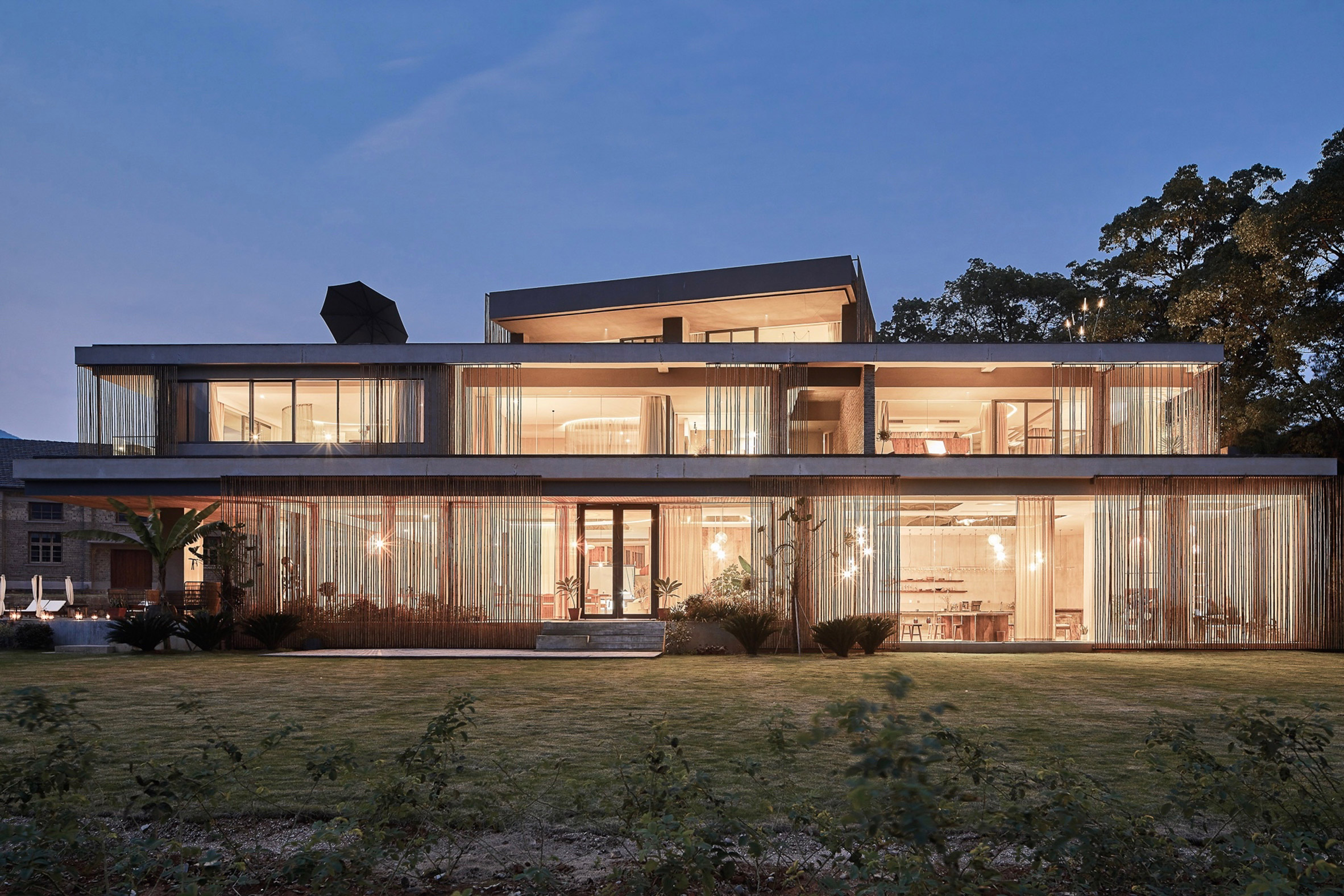
Shanghai-based architects Studio8 were approached by a group of private investors to create a boutique hotel for the area that could offer guests a relaxing holiday experience.
"One of the requests from the client was to 'design a room for the [guests] to stay for a whole day without stepping out', where there is no TV or iPad," the architects told Dezeen.
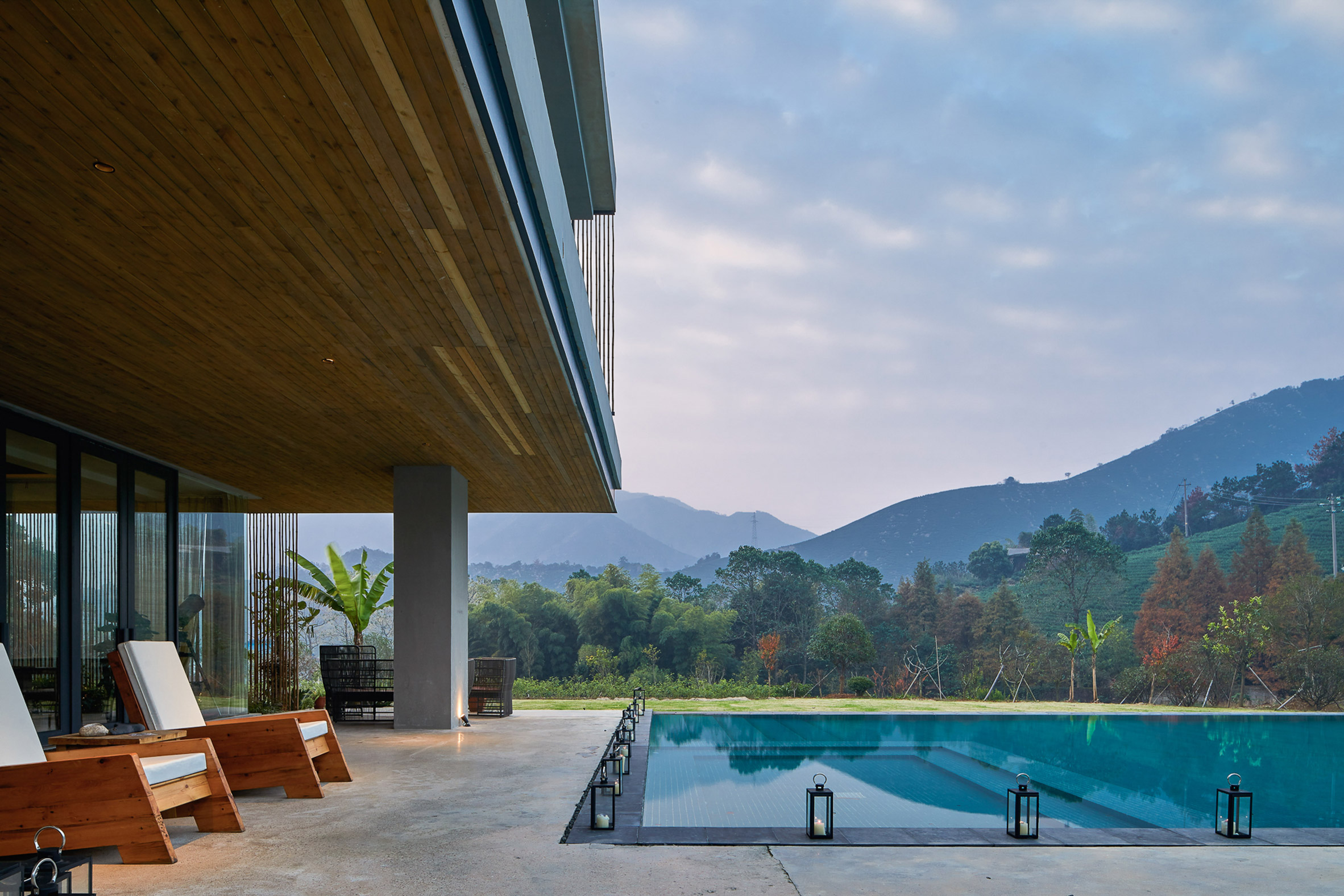
"Therefore we came up with the concept of 'finding yourself in nature', where guests can stay by themselves, reading or thinking amongst nature," continued the architects.
The 30,000 square-metre hotel is composed of three stacked rectilinear volumes, whose internal spaces have been arranged to offer different perspectives of the verdant landscape.
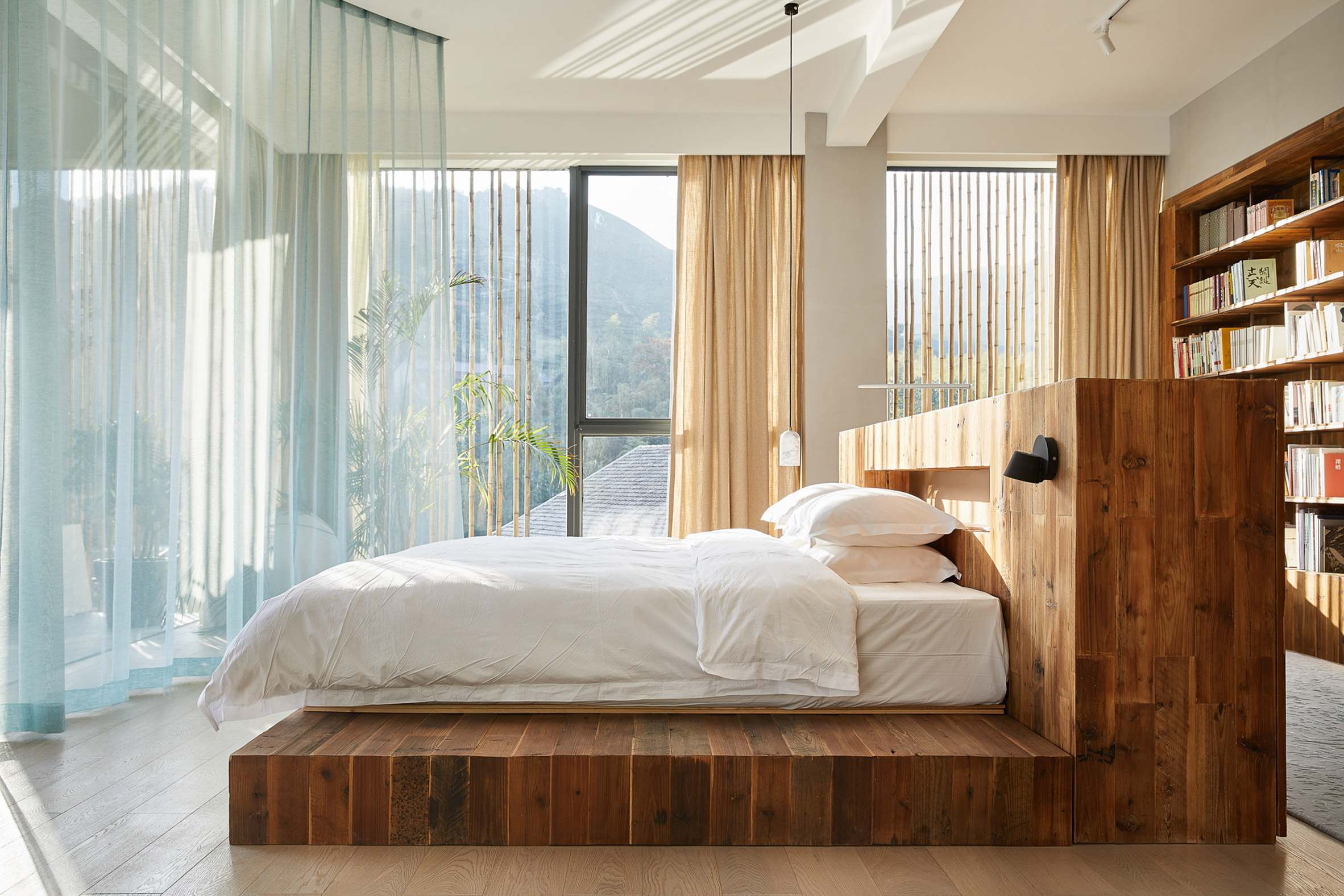
While rooms looking out to the east can see a dense bamboo forest, those towards the south elevation have views of a distant mountain range. Suites facing the west overlook a sprawling tea field.
"We wanted to design a contemporary building, and by orientating the rooms to the different natural elements around, the shape of the building is in a way naturally formed," explained the architects.
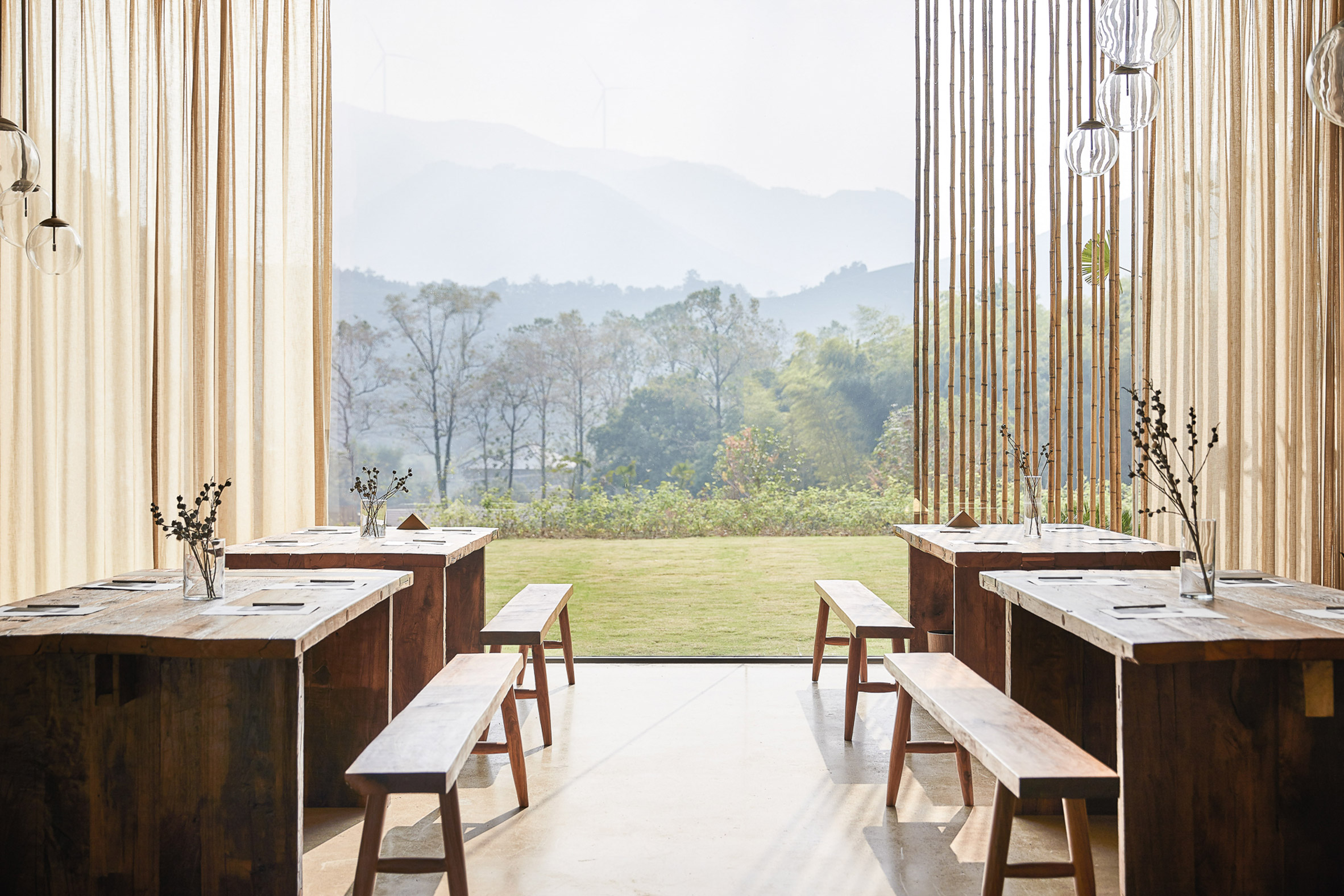
These elements have gone on to directly inform the interior design of the guest accommodation – sheer, jade-green curtains have been introduced throughout the western rooms to echo the colour of white tea leaves.
Dark, stone-coloured shades like slate grey have then been applied to the mountain-facing suites, and bamboo wood has been employed to craft the several of the furnishings in the eastern suites.
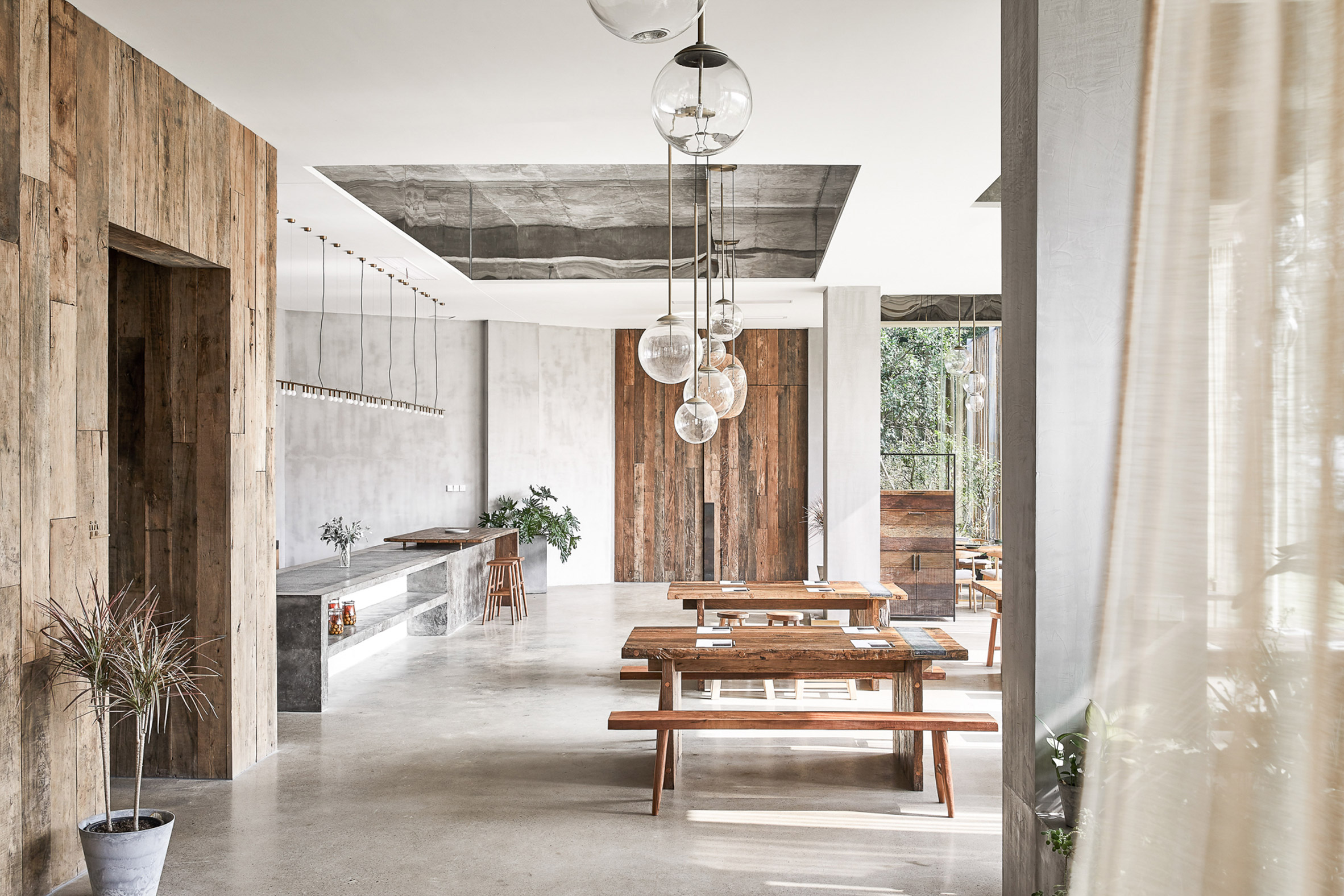
Strips of bamboo have also been used to create what the architects describe as a "second skin" around the hotel, screening its largely glazed facade and reducing its visual impact.
An infinity pool has been introduced on the roof of the hotel's second level, intended to reflect the sky and surrounding environment. It's punctuated by a series of square stepping stones that lead from the third floor suite to a sunbathing platform.
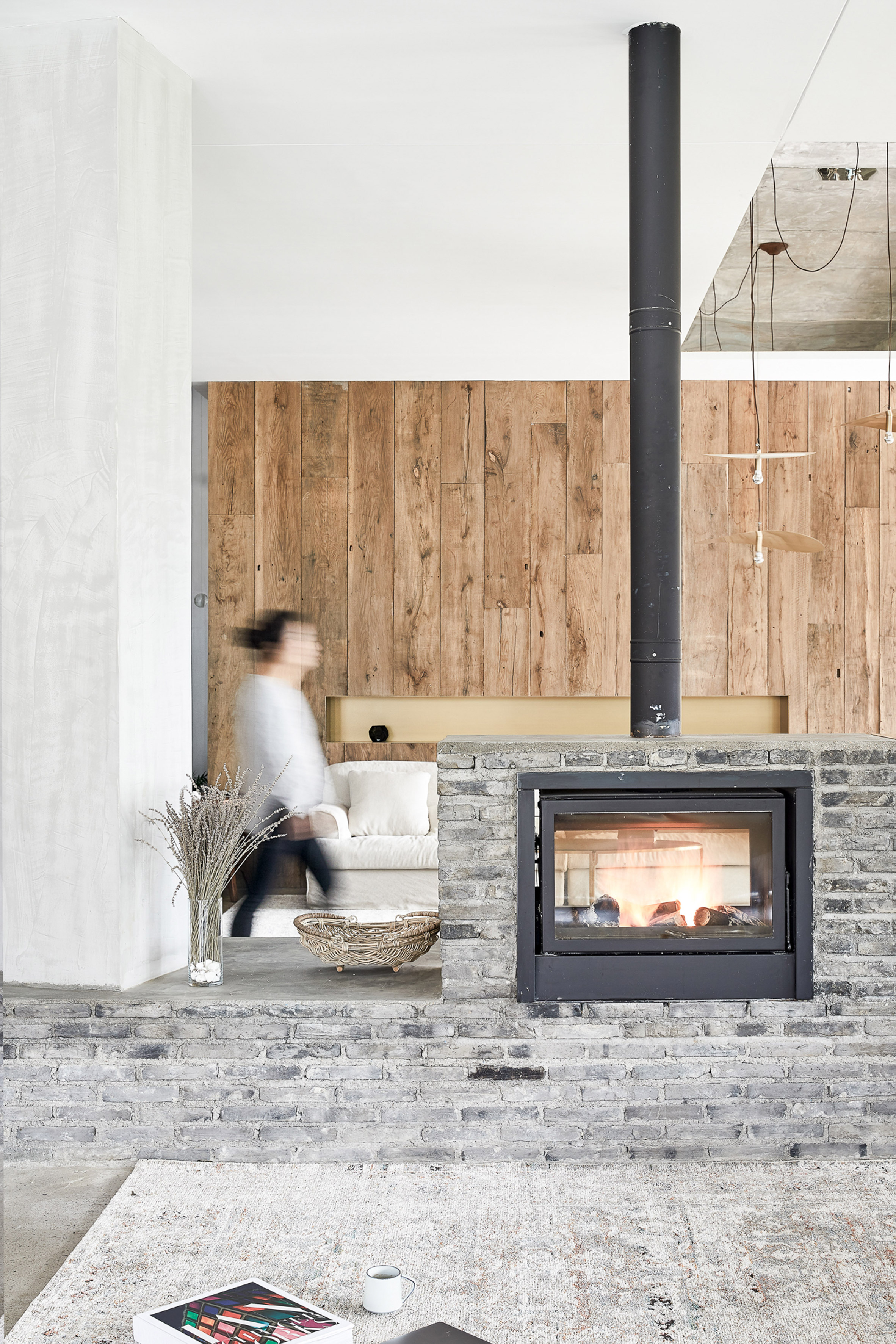
"After first contact with the site, [we] felt something was missing: a lack of water presence," said the practice.
"Water itself, and especially a very calm water surface, immediately generates a sense of relaxation."
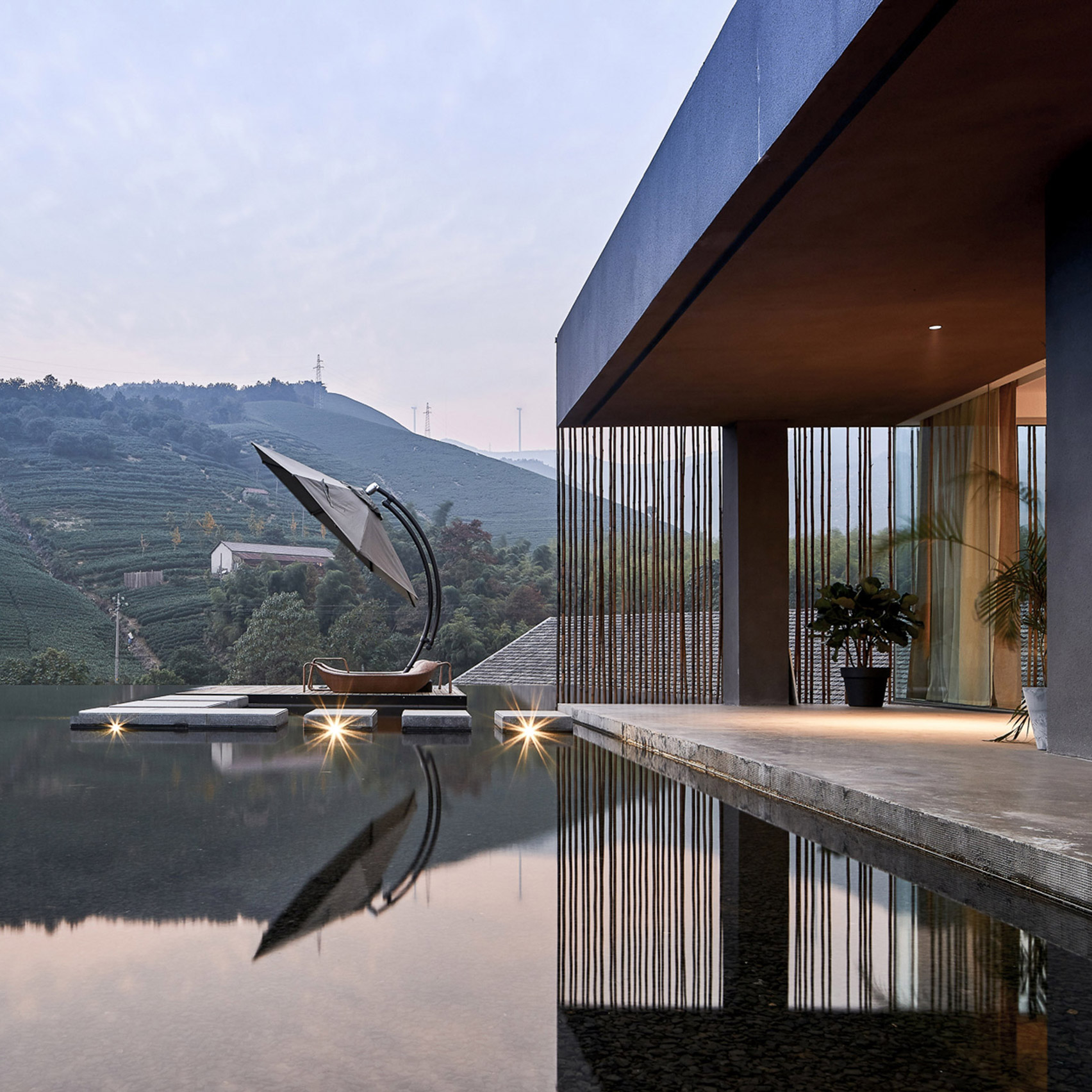
Communal areas on the first floor have been decked out with concrete floors and walls – timber bench seats and dining tables provide touches of warmth. A large kitchen has also been constructed at this level where guests have the option of cooking their own meals using produce grown on the site's land.
Much like Studio8, Sri Lankan practice Zowa Architects used bamboo canes to shroud the glass exterior of a the Kumoan Hotel in the Himalayas, which opened earlier this year.
Photography is by Sven Zhang.
Project credits:
Architect firm: Studio8
Lead architects: Shirley Dong, Andrea Maira
Collaborators: Luigi Arcadu, Stefano Bai, Alex Ho, Sara Ciribifera, Zhao Yue
The post Studio8 looks to the landscape of eastern China for the design of Anadu Resort hotel appeared first on Dezeen.
https://ift.tt/2NfhHJU
twitter.com/3novicesindia
No comments:
Post a Comment